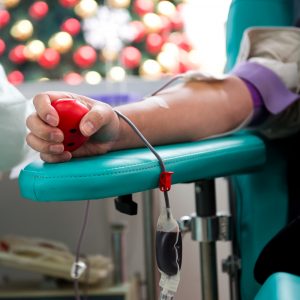Bleeding Disorders Awareness Week runs from the 8th – 14th of October, 2017. Run by the Haemophilia Foundation of Australia, the week aims to help everyone living with a bleeding disorder feel supported.
What is a bleeding disorder?
Bleeding disorders are conditions which affect the way blood clots, a process where blood changes from liquid to solid. Bleeding disorders can occur outside and inside the body, occurring under the skin or in vital organs.
When you’re injured blood clots to prevent massive blood loss. If you were to fall over while walking and scrape your knee, a clot begins to form to stop the bleeding. This forms a scab and as the wound heals the scab falls off.
Certain conditions can prevent blood from clotting properly, causing even minor cuts to result in heavy or prolonged bleeding.
What causes bleeding disorders?
For blood to clot the body needs clotting factors and platelets. Normal platelets clump together to form a plug and the clotting factors form a fibrin clot, keeping the platelets in place.
For people with bleeding disorders the clotting factors and platelets don’t work properly or are in short supply. This can result in prolonged bleeding and sometimes spontaneous bleeding inside the body.
Bleeding disorders can be caused by:
- Low red blood cells
- Deficiency in vitamin K
- Medication (anticoagulant) side effects
They can be inherited through genetics or acquired spontaneously. Some can be a result of severe bleeding following accident or injury.
What types of bleeding disorder are there?
The most common bleeding disorders include:
- Haemophilia
Currently affecting more than 2,700 Australians, haemophilia can be varied in degree and severity. Haemophilia A and B occur when there are low levels of clotting factors within the blood. Bleeding commonly occurs internally within the joints and/or muscles, either spontaneously or because of injury.
Haemophilia is an inherited condition being passed from parent to child through generations. Interestingly, men with haemophilia will pass the gene onto their daughters, but not their sons. Whereas women who carry the gene can pass it onto both their sons and daughters.
- Factor II, V, VII, X or XII deficiencies
The above deficiencies are bleeding disorders related to clotting problems or abnormal bleeding.
- Von Willebrand Disease
VWD is an inherited bleeding disorder caused when there is not sufficient von Williebrand factor in the blood or it does not work correctly. It is estimated to affect 200,000 Australians and shows few or no symptoms.
What are the symptoms of bleeding disorders?
The symptoms can be mild to severe and include:
- Heavy menstrual bleeding
- Frequent nosebleeds
- Bleeding in joints
- Unexplained bruising and bruising easily
- Excessive bleeding from small cuts
What are the treatment options?
While there is no cure, there are many treatment options depending on the bleeding disorder and severity. These include:
- Iron supplements: To help replenish iron levels and avoid anaemia.
- Blood transfusion: Replacing any lost blood.
- Factor replacement therapy: Injecting clotting factors into your blood stream.
- Plasma transfusions: Containing factor V and VIII to help with clotting.
To make a donation, or host an event for Blood Disorders Awareness Week visit Hemophilia Australia’s website.





